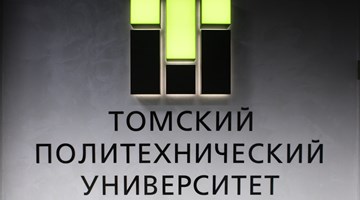TOMSK, Mar 20 – RIA Tomsk. Scientists of Tomsk Polytechnic Institute (TPU) are developing methods, algorithms and software which will help industrial and scientific enterprises to analyze large volumes of measurement data, the project manager Sergey Muravyev told RIA Tomsk on Wednesday.
According to him, the project received a grant from the Russian Science Foundation (RSF) in the amount of 18 million rubles. The works are carried out within the framework of the strategy of the scientific and technological development of Russia. Earlier it was reported that in 2016 the President of the Russian Federation approved a strategy on which worked three thousand experts, including scientists from different branches of science and representatives of industrial enterprises.
The purpose of the strategy until 2035 – is to create domestic products and technologies that meet modern requirements, to bring high-tech developments to new markets. The document spelled out priority areas: the development of systems capable of processing large amounts of data, artificial intelligence and machine learning, personalized medicine and others.
The strategy is implemented at the expense of the federal budget and extrabudgetary sources.
Math to help
"In our project, an important role is played by mathematics. Methods and algorithms of estimation of parameters of complex objects will become its result. The software created on their basis can be used in various enterprises and organizations whose work is related to analyzing data in large volumes", – says Muravyev.
The professor explains that a typical problem for big data is the need to automate their analysis.
As an example the scientist cites a task of processing environmental monitoring data when, for example, data on the concentration of harmful substances (such heavy metals as cobalt, zinc, chromium, copper) in soil and water resources in a vast, hard-to-reach area are collected for a long time using wireless sensor networks.
"It is necessary that these data and the results of their assessment can be trusted and make the right decisions based on them to reduce pollution and protect the environment. Our methods and algorithms will help to do this quickly and efficiently", – says the professor.
Thus, Muravyev emphasizes, the software being developed will help automate the process of analyzing large amounts of data. The work is performed by the staff of the Research Laboratory for Control Systems, Automation and Energy Efficiency of High-Tech Industries and Fuel and Energy Complex, which is headed by the professor Muravyev.
From the scientific point of view
Within the framework of the project polytechnicians will develop a set of standard methods for solving several practical problems, including automated visual detection of defects in welded joints, improving the accuracy of measurements of wireless sensor network nodes, and estimating uncertainties of fundamental physical constants.
"We use the "data fusion" term. This is the process of joint processing of data about a certain object provided by several sources", – the professor explains the scientific side of the project.
He adds that in the theory and practice of measurements, the description of their results in the form of intervals is widely used: "The data fusion procedure for integrating interval data consists in formation of such a result interval that is consistent with the maximum amount of input data".
© РИА Томск. Павел Стефанский
According to him, the existing methods for the data fusion of interval data do not ensure its absolute 100% accuracy. Therefore, there is a need to develop a method that allows, on the basis of incomplete data, to give a result with increased accuracy. During the project, TPU scientists will develop and conduct theoretical and experimental studies of the method of data fusion of interval non-linear measuring data.
"The need for interval integration methods exists in robotic and mechatronic systems, data acquisition networks, etc. For example, in wireless sensor networks designed for various types of monitoring, the integration of interval measurement data can improve the accuracy of multi-sensor measurement results and extend their lifetime", – specifies Muravyev.
Completion of works is scheduled for December 2020. "The demand for software is determined by its practical use, and commercialization of development is possible if there is interest from the business community", – summarizes Muravyev.